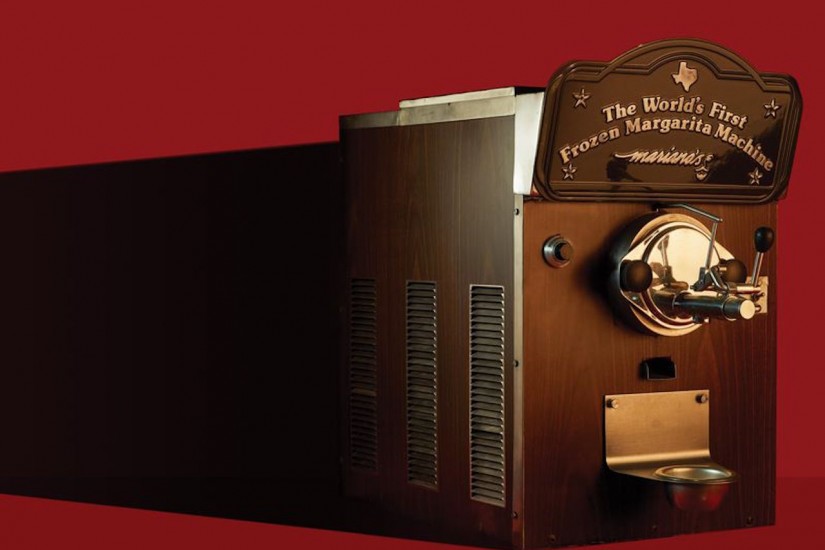When it comes to margarita lore, about the only thing for certain is that on May 11, 1971, Martinez pulled the lever on a repurposed soft-serve ice cream dispenser and filled a glass with a coil of pale green sherbet—history’s first prefab frozen margarita. The beverage was teeth-chatteringly cold with a proper tequila face-slap. Happy hour (and hangovers) would never be the same.
By adapting mass-production methods to blender drinks, Martinez elevated the frozen margarita from a border-cantina curiosity to America’s most popular cocktail. The innovation forever changed the Tex-Mex restaurant business (placing bars front and center) and triggered the craze for Tex-Mex food.
Befitting a musician who once recorded three versions of “La Bamba” on an EP titled Lotta Bamba, the convivial Martinez has a fresh, boyish manner and a beaming smile. He grew up in East Dallas, where at age 9 he started bussing tables at El Charo, his father’s Mexican eatery. “The customers were mostly Anglos who often had no idea what tequila was,” he recalls. “They’d show up with a souvenir bottle a friend had brought back from a vacation in Mexico, and ask my dad, ‘What do we do with this?’”
Though at the time liquor couldn’t be sold by the drink in Texas restaurants, the elder Martinez occasionally would whip up frozen margaritas in a blender for his patrons. (Introduced at a 1937 restaurant show in Chicago and bankrolled by bandleader Fred Waring, the humble Waring Blendor revolutionized bar drinks.) The elder Martinez used a recipe gleaned while working at a San Antonio speak-easy in 1938: ice, triple sec, hand-muddled limes and 100 percent blue agave tequila. The secret ingredient was a splash of simple syrup.
In 1970 an amendment to the state constitution made liquor by the drink legal, in cities or counties when approved in local-option elections. Shortly after Dallas voted yes, the younger Martinez launched Mariano’s Mexican Cuisine in a shopping center near the campus of Southern Methodist University. On opening night, the amiable owner appeared in a bandido costume. And customers, serenaded by a mariachi band, were encouraged to order margaritas made from the old family recipe. Libations were poured faster than you could say “One more round.” The second night wasn’t quite as successful: A barfly cornered Martinez and asked, “Do you know how to make frozen margaritas?”
